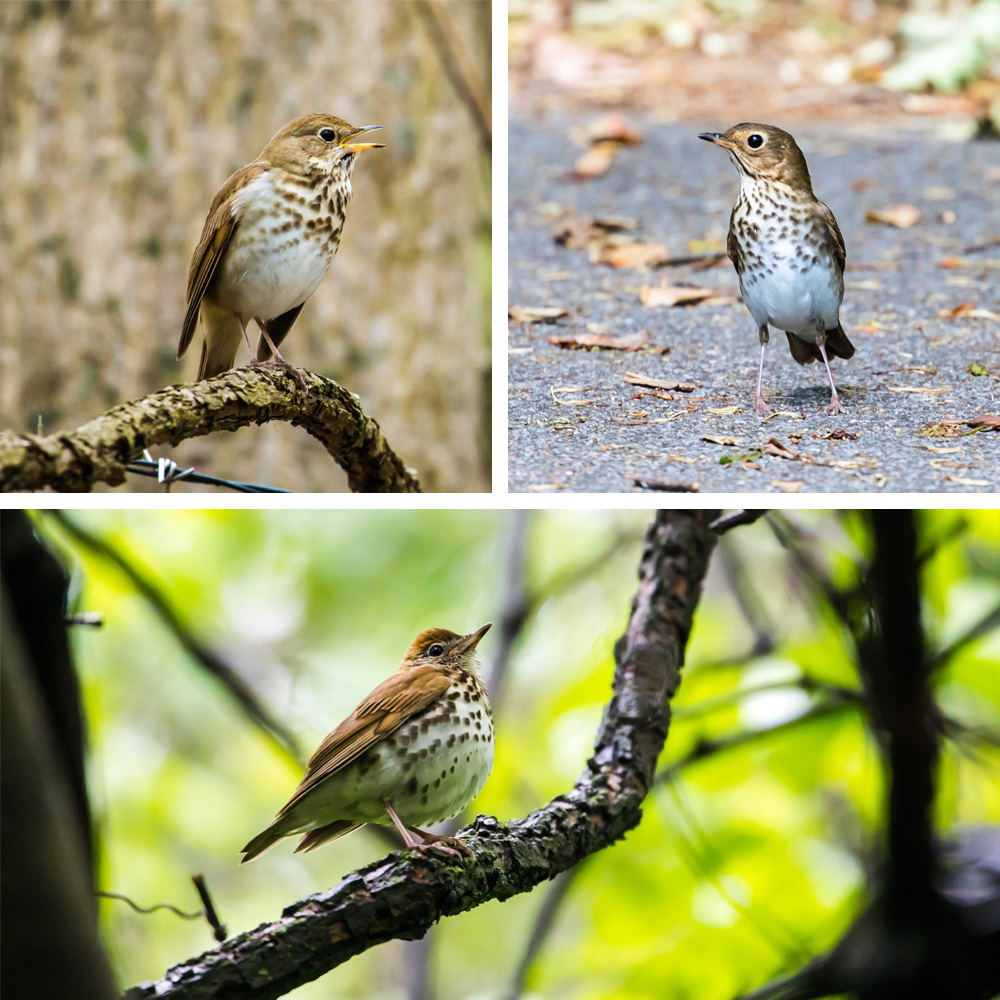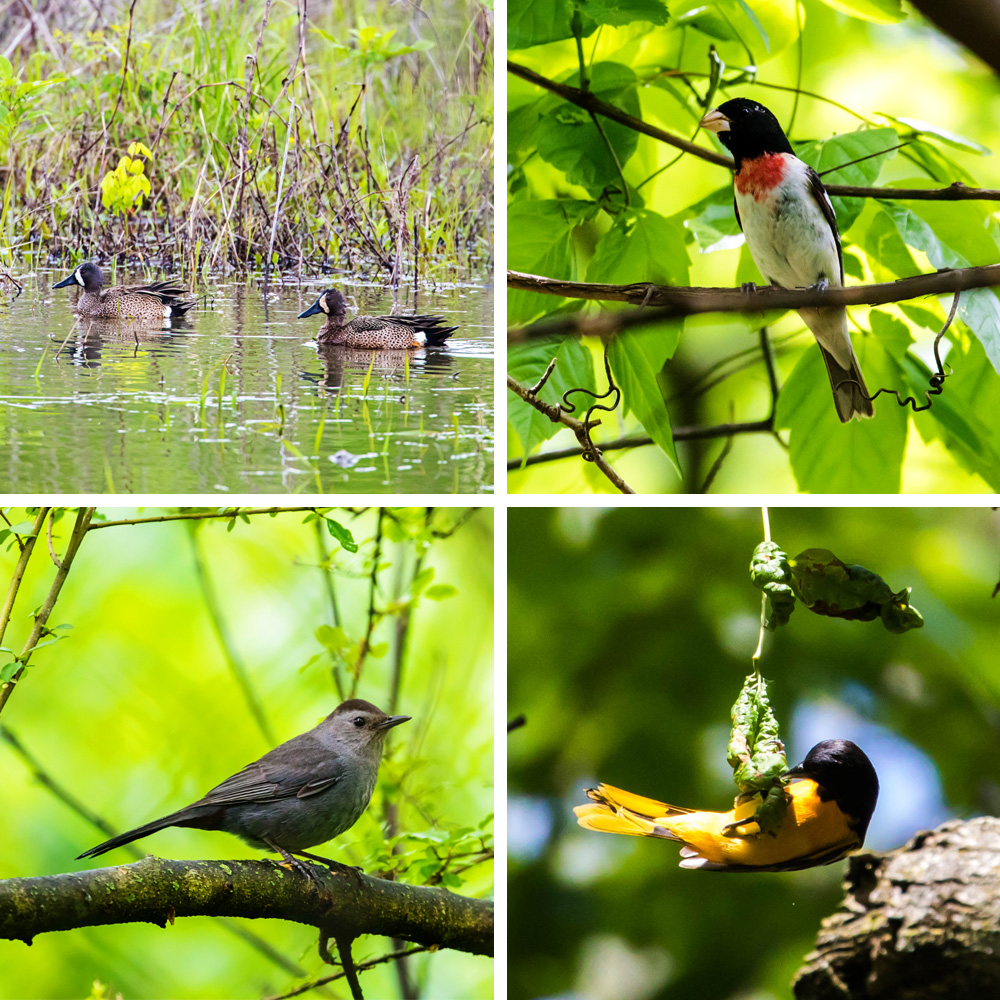NatureZen: World Migratory Bird Day
words and photos by Melissa McMasters
This Saturday, the Americas will celebrate World Migratory Bird Day, a day devoted to birds and the international cooperation required to assist in their conservation. About 20% of the world’s bird species migrate, flying hundreds or thousands of miles every year to find the best conditions to feed and breed. All of this time spent traveling introduces these birds to many more risks than those faced by birds that stay in one place year-round. Imagine how many more hazards you would encounter driving across the country–almost entirely at night–than you would staying at home. For birds, there are many obstacles during these journeys, including artificial lighting that throws off their navigation systems and glass windows that they don’t notice until they’ve flown into them.
The largest threats to migratory birds, though, are habitat loss and climate change. Let’s go back to that road trip you were taking. Let’s say this is a trip you’ve taken every year, and you’re accustomed to stopping for food, water, and a good night’s rest at certain points on the route. Now imagine you arrive in the only town with a motel and restaurant for hundreds of miles to find that it’s been wiped off the map by an extreme weather event like a tornado. Suddenly you’re exhausted, hungry, and running out of gas. Your journey has become much more perilous than it used to be.
This is why places like Overton Park’s Old Forest–which lies in the heart of the Mississippi flyway, one of the major arteries by which birds travel on their migration paths–are critically important to protect. By conserving the Old Forest, we give exhausted birds a place to stop and refuel. Our oak trees are full of the caterpillars they crave, our post-rain puddles give them a drink and a place to bathe, and there’s plenty of shelter for them to take a rest. As forests, grasslands, and wetlands have been repurposed for development and agriculture, birds have had fewer resources available for their journeys. It’s no wonder that populations of migratory birds are declining even faster than those of resident birds.
Because the number of birds we see in any given year is so dependent on factors like weather patterns, some migration seasons feel more intense than others. This year has felt late and light, with some warblers I’m using to seeing in the dozens only appearing once or twice. We’ve had a lot of nighttime storms, and often I’ll check BirdCast (a tool that uses radar to predict and track bird flights) at night to see that birds are shifting their flight paths away from our area to avoid the bad weather. But though they may be fewer and further between, I still celebrate every bird making its journey and gracing us with its presence along the way. Here’s a look at my experience of this spring’s migration.
Our first migratory birds started showing up the first week of April. These four all stay here for the summer to breed, so while they won’t all continue singing quite as much as they have been, you might luck into spotting them for the next few months.
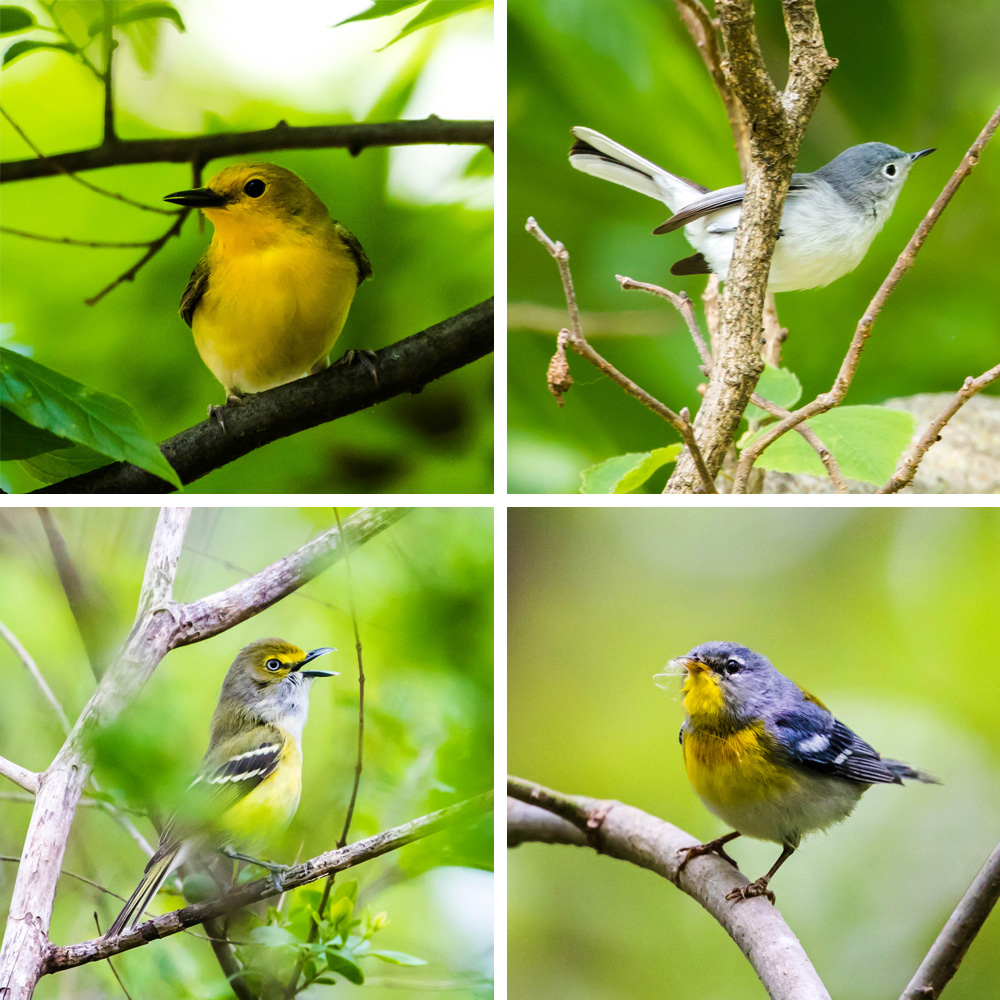
Early April also brought the exodus of our winter resident hermit thrushes (top left) and the arrival of their near-lookalikes, the Swainson’s thrushes (top right). These birds fill the forest with their quiet “wip!” calls for a few weeks before heading north. We do have one migratory thrush that remains in our area to breed: the wood thrush (bottom), whose flute-like song will ring out all summer.
In mid-April, I started to see more of the darlings of spring migration: the wood-warblers. These little birds weigh less than an ounce, are often brightly colored, and virtually never stop moving! Because they primarily eat insects, they’re constantly flitting about (often frustratingly high in the tree canopy) in search of food. If you ever hear a birder complain of “warbler neck,” it’s because they’re in the thrall of these creatures bouncing around in the treetops.

Mid-April also brought flushes of other birds that won’t stick around long. Blue-winged teals are little ducks that are found in small numbers here in winter, but many more come through during migration. Rose-breasted grosbeaks are beloved for their flashy bibs, but my favorite thing about them is their squeaky-gym-shoe call (because “grosbeak squeak” is so easy to remember in a sea of unfamiliar spring bird noises!). Baltimore orioles are often concentrated in large numbers at the tops of trees; if you can tune in to their chatter or whimsical songs, you can usually catch them in flight as they move around. And of course, there’s the gray catbird, confusing walkers and joggers everywhere by meowing in places a cat wouldn’t normally be.
This next set of birds are our familiar summer friends, backyard birds for many of us and park birds for the rest.
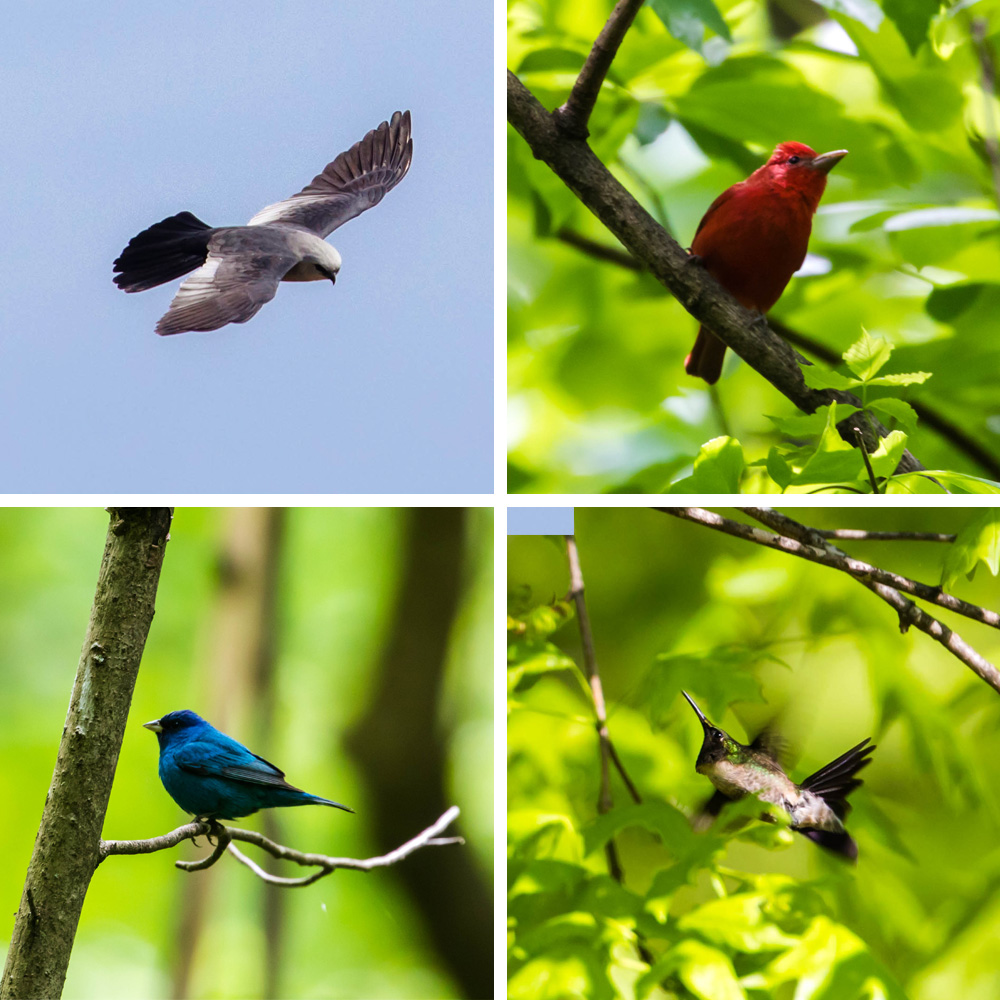
Songbirds, raptors, ducks–these are types of birds we’re using to seeing year-round in Memphis, but migration also brings birds that we normally have to take a trip to the beach to see. Shorebirds migrate too, and they use our ponds and wetlands as rest stops in the same way the songbirds use a forest. These birds were all seen at a small marshy area near Shelby Farms Park.
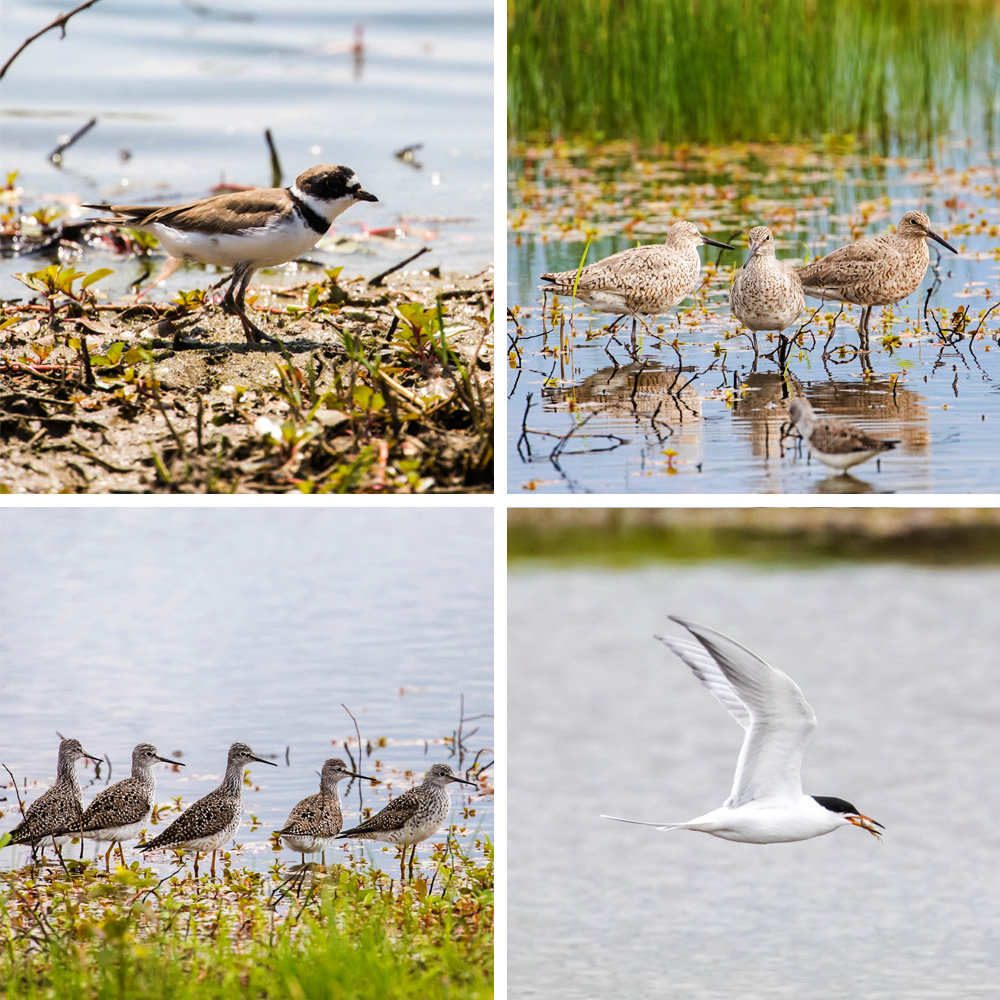
This past week was the busiest so far in migration, which is how we know this magical time of year is almost over. We had a third wave of warblers, inaugurated by the omnipresent sounds of the Tennessee warbler. Hard to see and not showy when you do, this bird nonetheless provides the spring soundtrack many of us associate with life in our region.
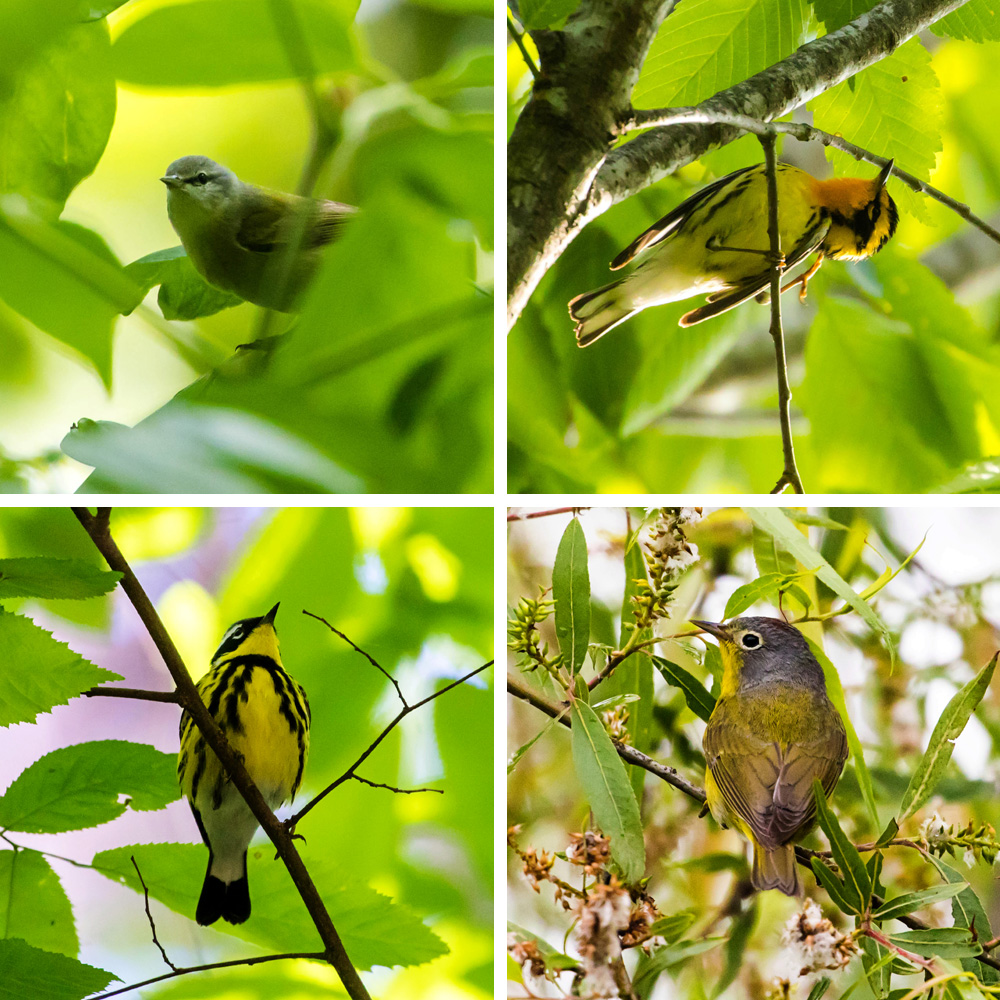
Now that migration is slowing down in our area, it’s time to start enjoying the new baby birds that are currently fledging from their nests and making a high-pitched racket all across the woods. In fact, the blue-gray gnatcatchers who were just arriving a few weeks ago have already had time to make new ones.

